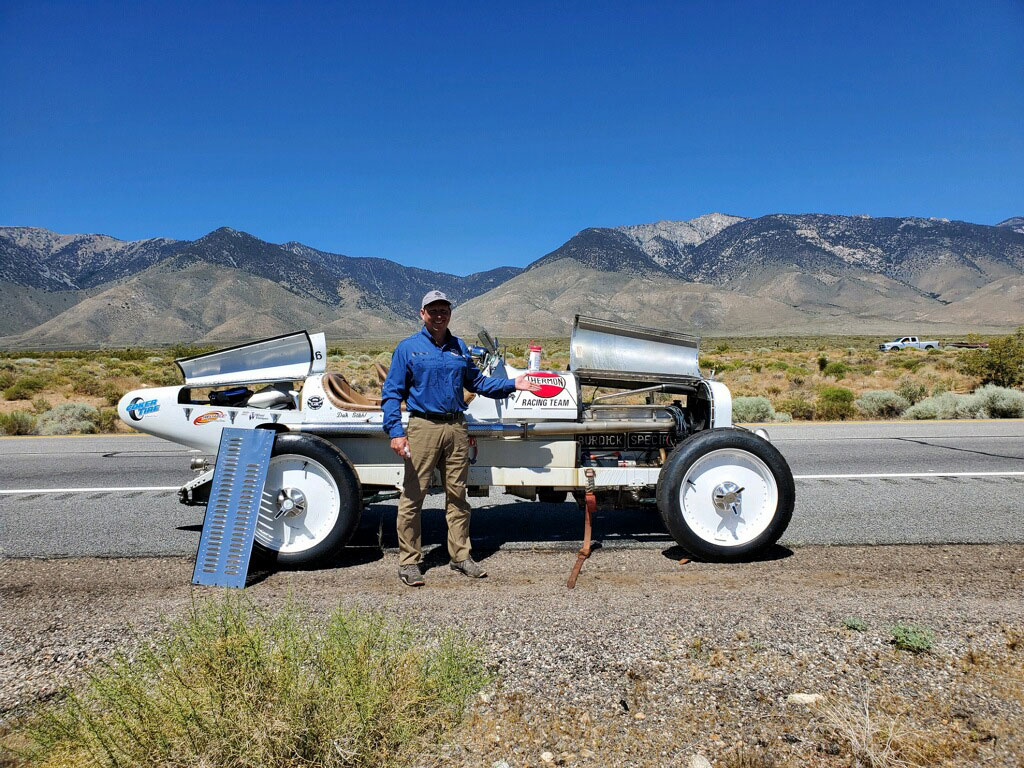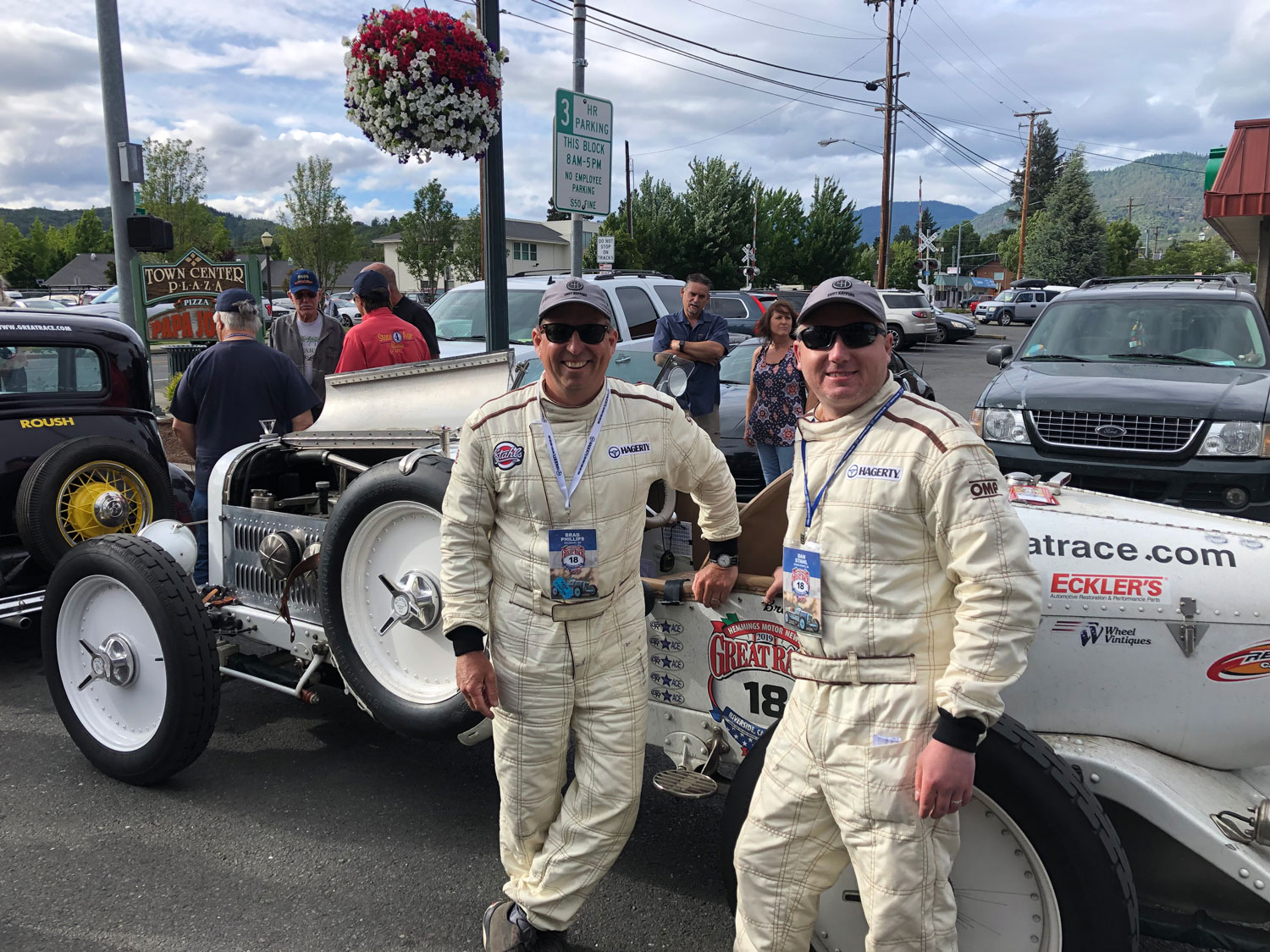Media | Articles
Watch those gauges! It could save you from a big repair bill
Anyone who has undertaken private or commercial pilot training understands the importance of constantly scanning the gauges on your instrument panel. While having a mechanical component in a land-based vehicle fail generally isn’t going to result in a spiral towards the earth, keeping that same mentality can make you a safer driver, as well as potentially keep you from a very expensive repair bill.

I just got back from driving a 1916 Hudson Speedster in The Great Race, from Riverside, California, to Tacoma, Washington. As usual, the car I was driving was one I had never been in before, as it is owned by the Stahl Automotive Foundation in Michigan. Those folks are great friends of mine and I’m honored to have been one of their team drivers for the past couple of years. This year’s race covered almost 2300 miles, and I view a big part of the job as getting both the car and my navigator Dan Stahl to the finish line safely.

The instrument panel of the Hudson is actually pretty simple, since it’s a race car dedicated to this kind of long-distance rallying. Right in front of you is the big wooden wheel with a leather wrap for good grip in all weather conditions. This is an open car, so if it rains, snows, or you are enveloped by a swarm of locusts, it’s best to be able to continue to steer it. At the left of the dash is a fuel gauge. To the right is a line of three gauges top to bottom for water temperature, oil pressure, and battery voltage. Connected to the steering column is a small fuel pressure gauge.
Marketplace
Buy and sell classics with confidence
Now, there’s another important thing to think about with your gauges that I don’t think a lot of people take to heart—are you looking at a mechanical reading or an electric one through a sending unit? This is important to think through if you have to diagnose a failure or potential failure. In this case, the fuel pressure and oil pressure were both mechanical, which meant there was an actual fluid creating pressure on the gauge, not a sending unit. Other items on the dash were the official Timewise rally speedometer and a big clock, plus a few switches for fuel pumps, battery, and ignition.
I spent the first practice day getting to know the car, and that included noted what were “normal” readings on everything. Temperature never went above 195 degrees, and was usually lower, even in the relative heat of southern California. Oil pressure seemed pretty solid between 40 and 50 pounds, depending on engine rpm. After topping off the fuel tank, we noted how much fuel the car took and where the gauge moved. We estimated it had about a 25-gallon tank, and we put in almost 20 gallons. Since the fuel gauge was reading at a half tank before the fill up, we noted this as probably “not accurate” and vowed to keep an eye on it to best estimate our range during the event stages. We were learning about the car and being methodical about where things were.

Well, here’s where all this comes together. On the second day of the rally, we were tasked to run from Lancaster, California, to Gardnerville, Nevada. This was a long stretch through the Mojave Desert, big mountain passes, and a lot of beautifully desolate landscapes. We were driving the course on the clock, doing the prescribed 50 mph, when I saw the oil pressure gauge fall to zero. That’s a BIG uh-oh moment, and I immediately said, “Oil pressure!” and flicked the toggle switch labeled BAT to the left, killing the motor. Dan and I stopped on the side of the road—and we’re talking miles from nowhere!

I was super happy to have caught the gauge moving down, but now it was time to find out if we had a real problem or something else. Knowing the gauge was mechanical meant that there was either a malfunction in the device (unlikely) or that there was a leak in the pressure line to it (hopefully) or at the engine. I hadn’t heard any strange noises, the water temperature was reading normal, and there were no other signs of distress. Time for a physical inspection.

As soon as we jumped out to pull the panels off and get to the motor, we could see something catastrophic had indeed occurred. The entire bottom and side of the race car were covered in oil. This big Hudson has a 300+-cubic-inch six-cylinder engine, modified with a dry sump lubrication system. There are two big aircraft-style fittings and lines that run from the scavenge pump to a remote oil filter system, then back into the pump and then the engine. The line to the oil filter inlet had completely sheared! The high-capacity pump had probably hosed the highway with about 13 quarts of oil as it lost pressure. Sorry, California.

Due to our location and the fact that there were several other cars currently in distress out in the desert, we waited for a few hours for the sweep truck. We knew we needed to bypass the filters to get back on the road, and unfortunately, we didn’t have a big enough wrench in the car to attack those aircraft fittings. Live and learn—make sure you have all the tools you need!

But eventually we got help, and literally 10 minutes after the sweeps arrived, we had the hose rerouted. (Thanks again to Perry and Robert for the excellent help.) Now we obviously needed to see if the engine had sustained any damage before proceeding. We checked the dipstick, and there was zero oil showing on it, which made sense given the situation. I felt confident the engine had not run long on low or no oil due to my gauge scanning, but it was still a bit of a “gulp” moment to see that dry dipstick. Between us and the sweep truck we had five quarts of 20W/50—would that be enough to get a good pressure reading? We added all we had, then cranked the motor with the coil wire off to see if it would build pressure-—bingo! It came right up to about 40 pounds and we buttoned up the Hudson. The pickup or the dry sump system was a couple of inches above the bottom of the pan, so what we added was enough to trundle on carefully.
Listening for any weird noises and keeping an eye on temperature and pressure, we kept the revs down and just about idled it the nine miles to the station. I cleaned them out of 20W/50 and added another six quarts to bring the level to the full mark on the dipstick. All seemed well, and we roared off again into the distance!

To bring this full circle, if I had not had a careful eye on the instrument gauges, it could have been the screeching of wasted bearings that was the indicator of a problem, and that would have ended the race for us. As it turns out, we persevered and ended up placing 23rd overall ( of more than 100 entries). I highly recommend that if you don’t have a regular system in mind for keeping an eye on things, you figure one out for yourself. I also recommend augmenting any “idiot lights” on your dash with a real numeric gauge. Do you want to find out you have a problem after the fact, or catch it before it becomes a problem?









